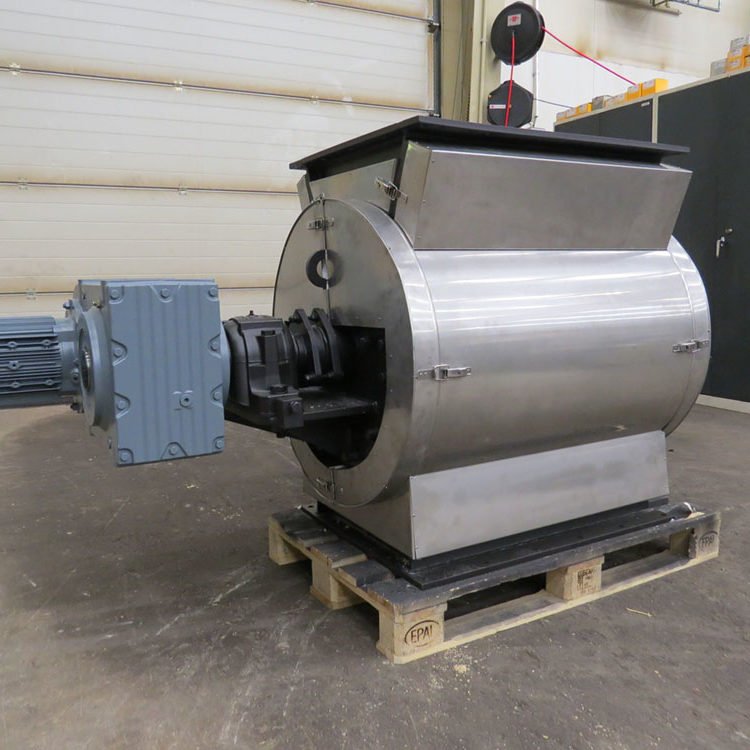Introduction to Valve Types
Valves are essential components in various industrial processes, serving to control the flow of materials, gases, and liquids. Among the many types of valves available, rotary valves and other types such as gate valves, ball valves, and butterfly valves are commonly used. Each type has its unique characteristics, advantages, and applications. Understanding these differences is crucial for selecting the right valve for a specific process.
Rotary valves, for instance, are often used in pneumatic conveying systems due to their ability to maintain a controlled atmosphere and prevent air leakage. On the other hand, gate valves are typically used in applications requiring a straight-line flow of fluid with minimal restriction. This article aims to provide a comprehensive comparison between rotary valves and other types of valves, highlighting their respective features and applications.
Rotary Valves: Functionality and Applications
Rotary valves are designed to regulate the flow of bulk materials from hoppers, bins, or silos to the next stage of the process. They are particularly effective in low-pressure pneumatic conveying systems, where they serve as airlocks to prevent air leakage and maintain a controlled atmosphere. This makes them ideal for handling dusty or powdery materials, ensuring a dust-free operation.
In addition to their use in pneumatic conveying, rotary valves are also employed in pressure injection systems. Here, they feed material at a constant rate through a submerged lance into molten slag, a process commonly used in smelters. The closed design and various sealing technologies of rotary valves make them suitable for handling hot materials, as they can be adjusted to account for thermal expansion.
Gate Valves: Characteristics and Uses
Gate valves are widely used in applications that require a straight-line flow of fluid with minimal restriction. They operate by lifting a gate out of the path of the fluid, allowing for unobstructed flow. This makes them ideal for applications where a full-flow or no-flow condition is needed, such as in water supply systems and pipelines.
One of the main advantages of gate valves is their ability to provide a tight seal when fully closed, which helps prevent leakage. However, they are not suitable for throttling purposes, as partially opening the gate can cause significant wear and tear. Gate valves are also less effective in handling viscous fluids or materials with suspended solids, as these can obstruct the gate mechanism.
Ball Valves: Design and Efficiency
Ball valves are known for their durability and excellent sealing capabilities. They consist of a spherical disc with a hole in the middle, which aligns with the flow path when the valve is open. This design allows for quick and easy operation, making ball valves suitable for applications that require frequent opening and closing.
One of the key benefits of ball valves is their ability to provide a tight seal, even after prolonged use. They are also versatile, as they can handle a wide range of fluids, including gases, liquids, and slurries. However, ball valves are generally not recommended for applications involving high temperatures or pressures, as the materials used in their construction may degrade under such conditions.
Butterfly Valves: Versatility and Limitations
Butterfly valves are characterized by their simple design and ease of operation. They consist of a disc mounted on a rotating shaft, which can be turned to open or close the valve. This design allows for quick and efficient flow control, making butterfly valves suitable for a wide range of applications, including water treatment, chemical processing, and HVAC systems.
One of the main advantages of butterfly valves is their compact size and lightweight construction, which makes them easy to install and maintain. They also offer good flow control capabilities, as the disc can be positioned at various angles to regulate the flow. However, butterfly valves are not as effective in providing a tight seal as other types of valves, such as ball valves. They are also less suitable for handling abrasive or corrosive materials, as the disc and shaft can be prone to wear and damage.
Comparative Analysis: Rotary Valves vs Other Valves
When comparing rotary valves to other types of valves, several factors need to be considered, including functionality, sealing capabilities, and suitability for specific applications. Rotary valves excel in applications that require a controlled atmosphere and dust-free operation, making them ideal for pneumatic conveying systems and pressure injection processes. Their ability to handle hot materials and adjust for thermal expansion further enhances their versatility.
In contrast, gate valves are best suited for applications requiring a straight-line flow with minimal restriction, while ball valves offer excellent sealing capabilities and durability for a wide range of fluids. Butterfly valves, with their simple design and ease of operation, are versatile and suitable for various applications but may not provide the same level of sealing or durability as rotary or ball valves.
Conclusion: Choosing the Right Valve
Selecting the right valve for a specific application requires a thorough understanding of the unique characteristics and advantages of each type. Rotary valves are ideal for applications that demand a controlled atmosphere and dust-free operation, particularly in pneumatic conveying systems. Gate valves, ball valves, and butterfly valves each offer distinct benefits and are suited to different types of processes and materials.
By carefully considering the specific requirements of your application, you can choose the most appropriate valve to ensure efficient and reliable operation. Whether you need the precise control of a rotary valve or the durability of a ball valve, understanding the differences between these valve types will help you make an informed decision.

You have a challenge that needs solving?
Let us help! Contact us for more information about our products and services.
